This is the sixth in a series of nine posts covering our 13-day tour around Uganda with Mountain Gorilla Coffee Tours (“MGCT”).
After leaving behind the amazing views at the Top of the World, we drove to Queen Elizabeth National Park. On the way, we crossed back into the Southern Hemisphere and stopped to take an obligatory picture at one of the concrete monuments Uganda has erected along the Equator.1

Queen Elizabeth National Park is Uganda’s most visited national park and, according to Wikipedia, home to 95 species of mammals and more than 500 species of birds. One of the most notable features of Queen Elizabeth National Park is that it spans the Kazinga Channel, which connects Lake George and Lake Edward and contains one of the largest concentrations of hippos2 in the world. On our first evening in Queen Elizabeth National Park, we checked into our accommodation (the stellar but simply named Bush Lodge) and watched an amazing sunset over the Kazinga Channel, soundtracked by a chorus of grunting hippos.
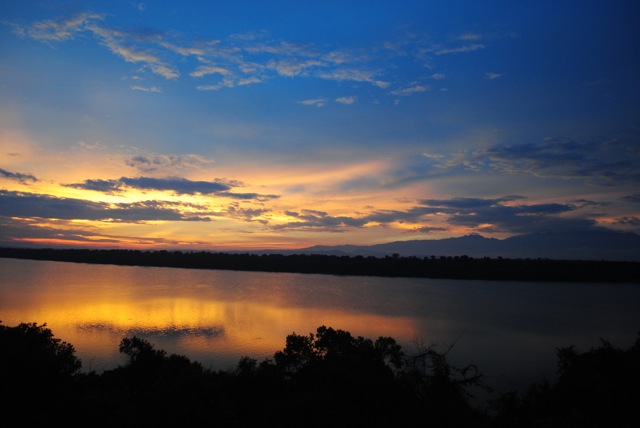
The next morning, we arose early and set out for a game drive before breakfast. Unfortunately, our morning game drive was lackluster. The area of the park surrounding the Bush Lodge – generally one of the better areas for wildlife viewing – had had a controlled burn one month prior to our arrival and was therefore barren and largely deserted. We spotted a few small animals – mongooses, a turtle – and some birds, but our first close-up spotting of an animal happened when we came upon a hippo wallowing in mud in the middle of the road. As we have mentioned, we were visiting Uganda near the beginning of one of its rainy seasons, and it rained nearly every day during our stay there. Consequently, various sections of the roads through the park were muddy – creating the perfect spot for the hippo to relax.
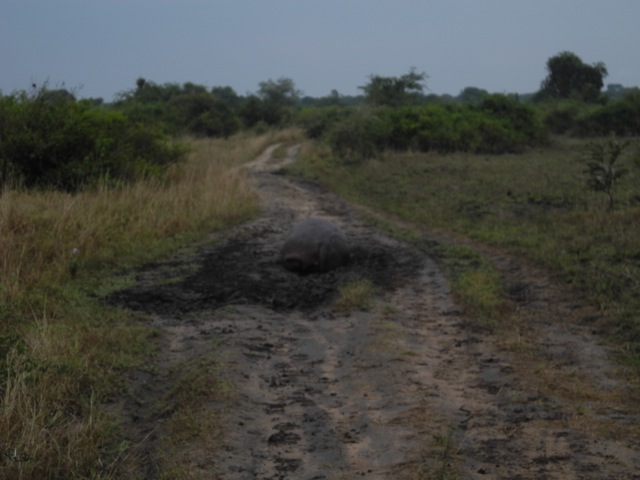
At first, we thought the hippo was sick or injured because it didn’t get up as we approached. Finally, he heaved himself up with an annoyed sigh and lumbered away – not sick or injured, just lazy.
Alas, the lazy hippo had the last laugh: when we tried to drive farther down the road where the hippo had been lolling, our vehicle became intractably mired in the mud. It wouldn’t go forward or backward, and pushing was no use. We were completely stuck. As we stared at each other in disbelief, the hippo returned to look at us before sauntering away.

We had seen some other, larger vehicles nearby, so we waited for them to come by and assist us. After a while, however, it became clear that these vehicles must have taken another (smarter) path through the park, and, if we wanted to get out of the mud anytime soon, we would have to arrange our own rescue. Our guide Robert’s phone was dead, but he put his SIM card into the cell phone of one of our Italian companions,3 made a couple of calls, and, eventually, some men in a Land Rover arrived with chains that they hooked up to our vehicle.
When they tried to pull us forward, the chain broke and we realized how stuck we really were. They then tried to pull us backwards out of the mud, and, after a lot of wheel-spinning and groaning of the chain, we were finally free.
By this point, we were all a little dispirited. We hadn’t seen many animals, we had been stuck in the mud for nearly two hours, and we were tired and hungry. We were on our way back to the Bush Lodge when we noticed another vehicle paused near a bush, with the occupants all pressed up against the windows, staring into the bush. After it moved on, we spoke with the armed park ranger who had been talking to the other vehicle.
He told us lions were inside the bush, and so we loaded the park ranger into our vehicle and maneuvered into the space just vacated by the other vehicle. We struggled to glimpse the lions through a hole in the branches, but all we could make out was a stretch of brown that may or may not have been part of a lion. The ranger got out of our vehicle for a better look, and suddenly there was a loud rustling noise in the bush. The ranger jumped about a foot in the air and ducked behind our vehicle; we all scrambled to roll up the windows.
When it was clear that no lion attack was forthcoming, the ranger got back in our vehicle and we drove around to the other side of the bush, just in time to spot the lions emerging and heading for another bush.
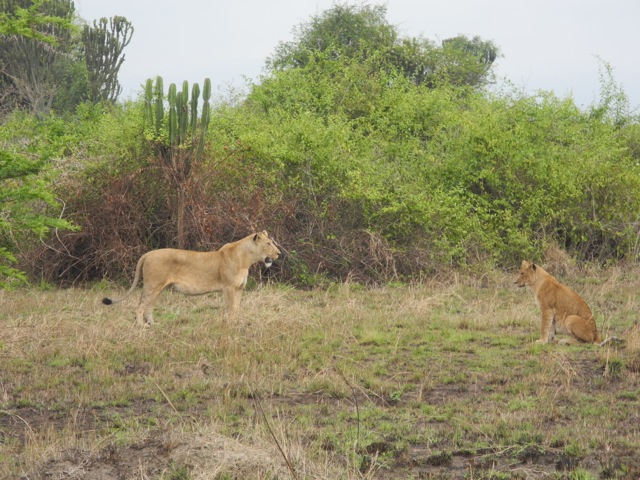
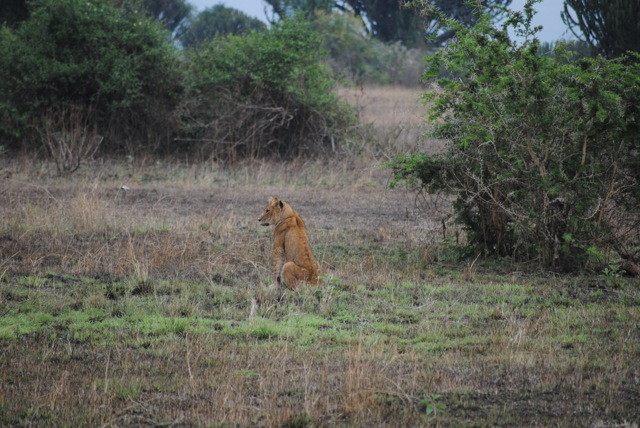
Before disappearing into a new bush, they stopped to give us a weary look.
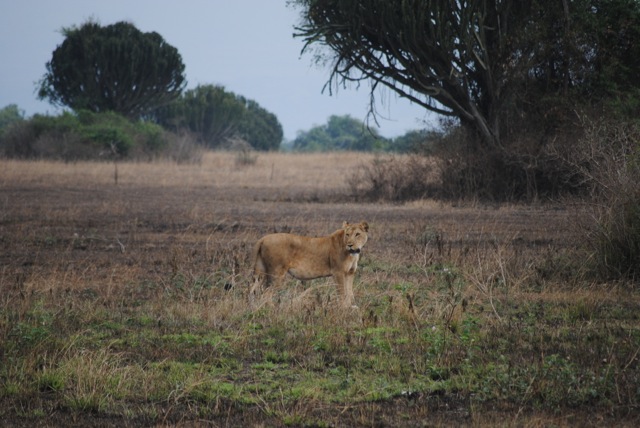
Our morning having been slightly redeemed by the lion-sighting, we headed back to the Bush Lodge for brunch.4
That afternoon, after a welcome nap, we set took a boat ride along the Kazinga Channel. On the way to launching point, we drove through the park and had marginally better luck spotting animals than we had had in the morning. (Also, we didn’t get stuck in the mud this time, so there’s that.)
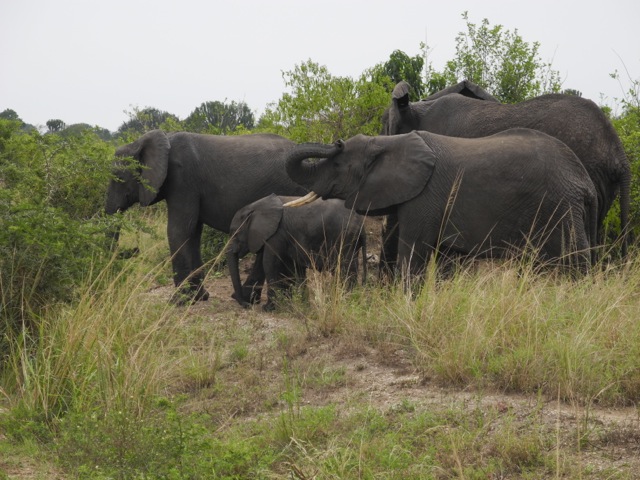
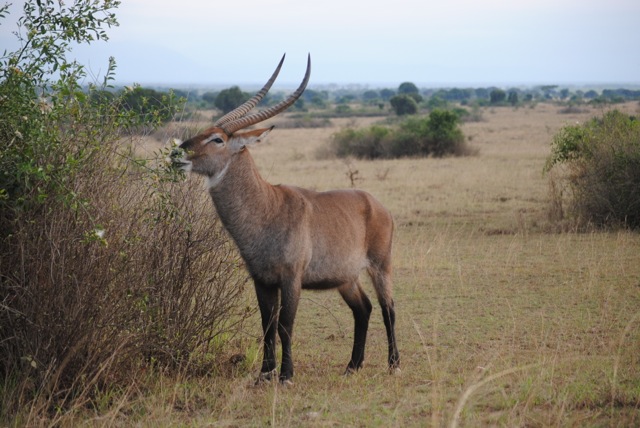
As mentioned, the Kazinga Channel has one of the world’s largest concentrations of hippos – and, after our boat ride, I definitely believe that to be true. We saw so many hippos during our hour-long boat trip!
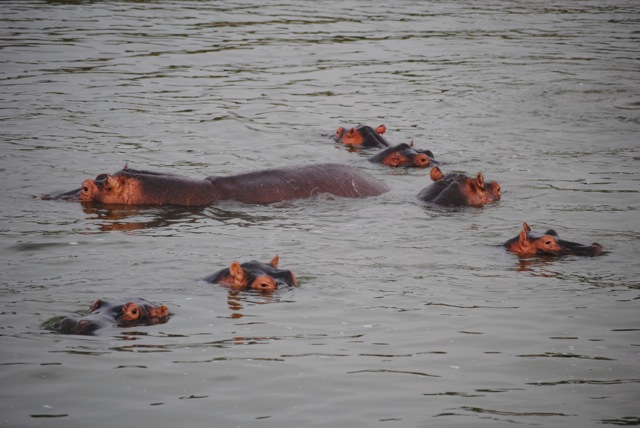
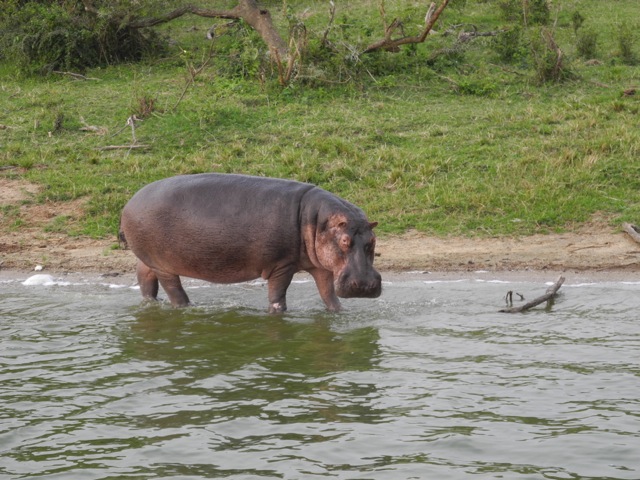
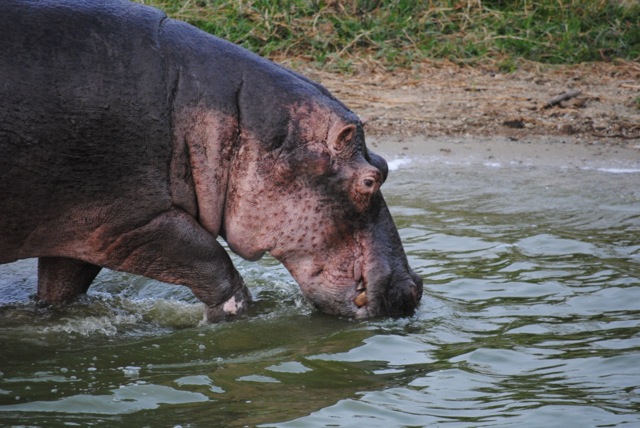
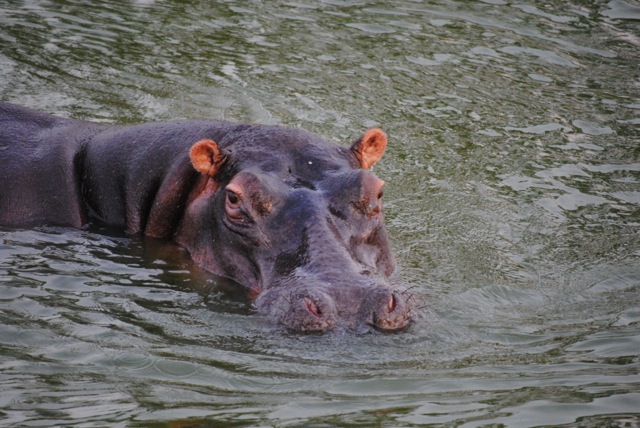
After hippos, the most numerous animals we saw on the Kazinga Channel were buffaloes. As buffaloes are my favorite, I was delighted – although our guide explained that many of the buffaloes we saw were lone males that had been expelled from their social groups and were called “losers,” which made me sad for them.
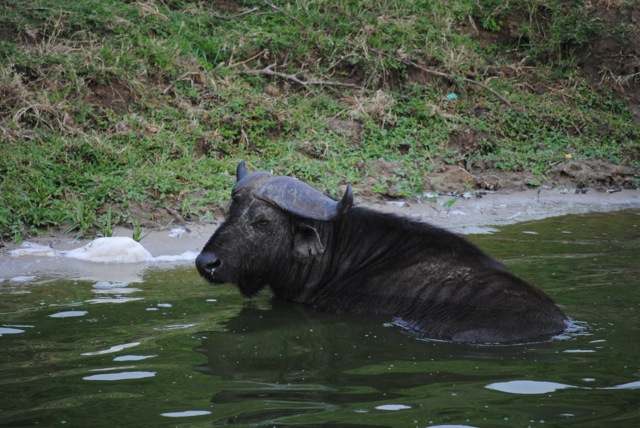
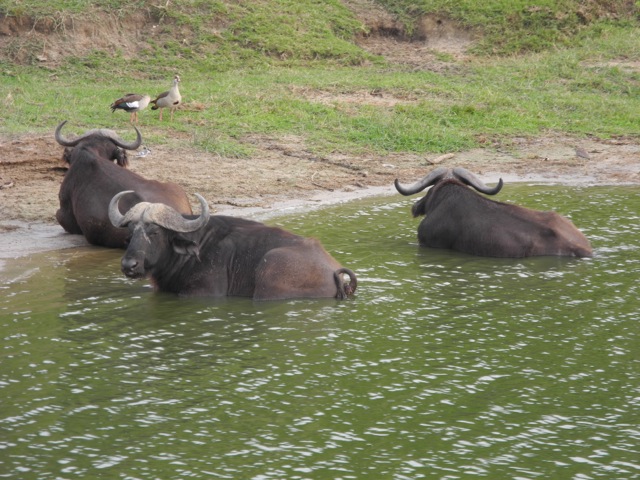
We also saw crocodiles and a large monitor lizard.
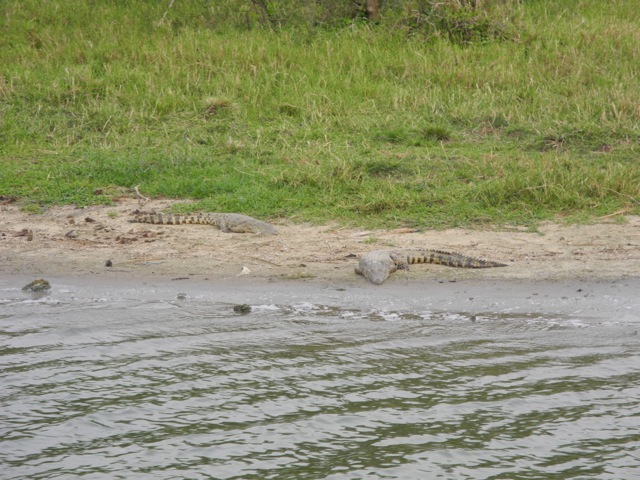
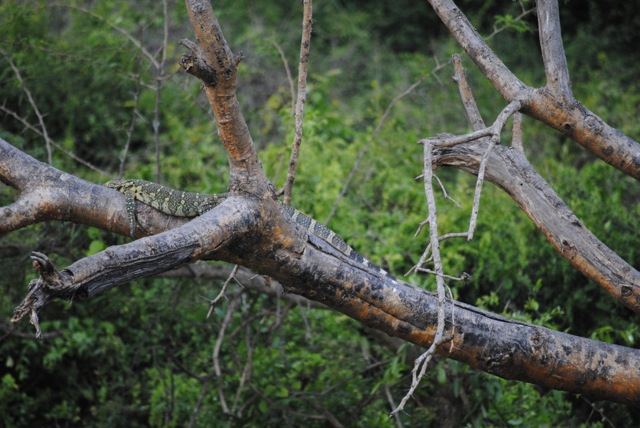
More notably, we also saw many different types of birds!
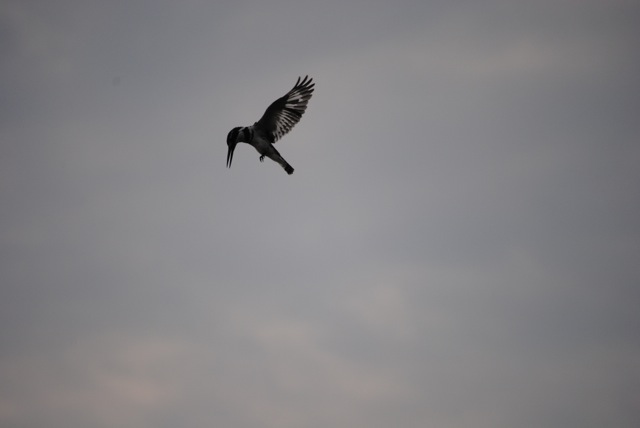
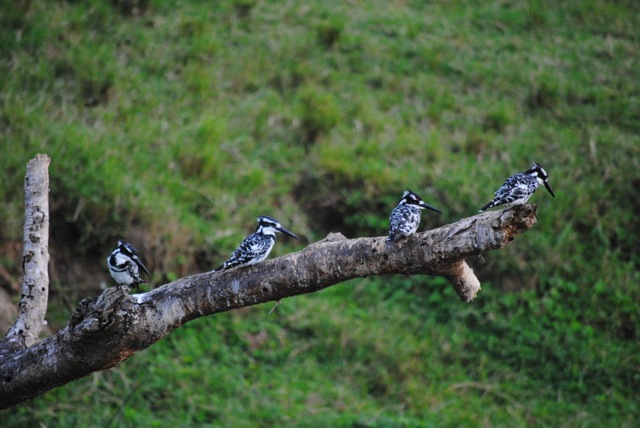
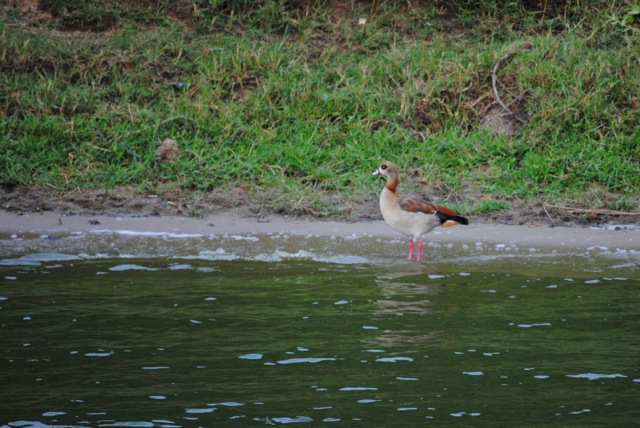
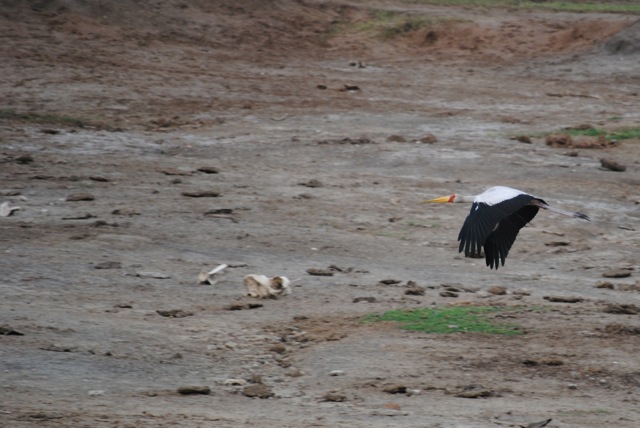
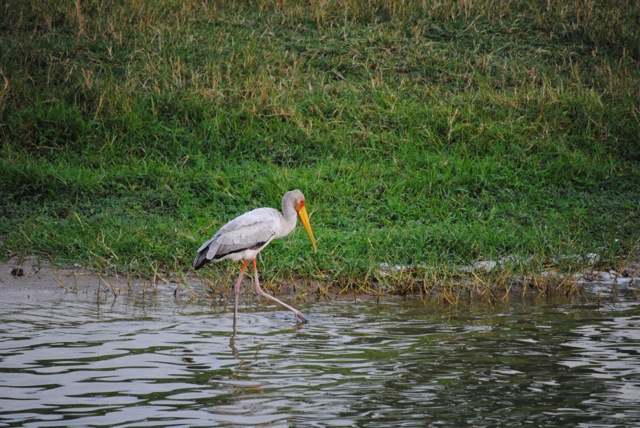
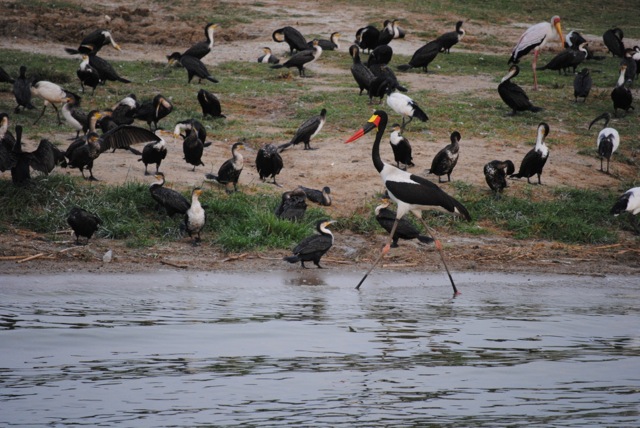
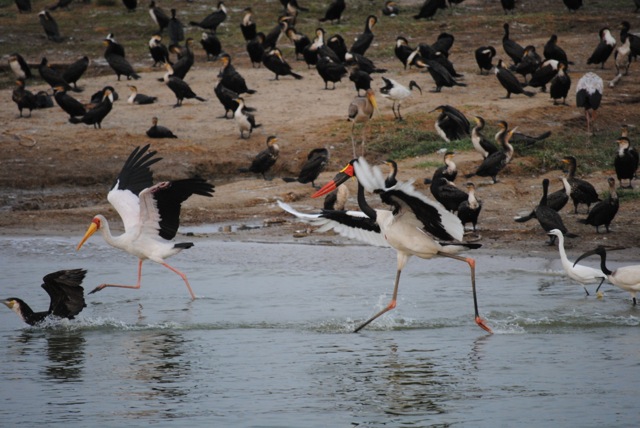
The following morning, we embarked upon another largely disappointing game drive. The most exciting thing we saw was a herd of buffaloes on the move (which was, actually, really cool).
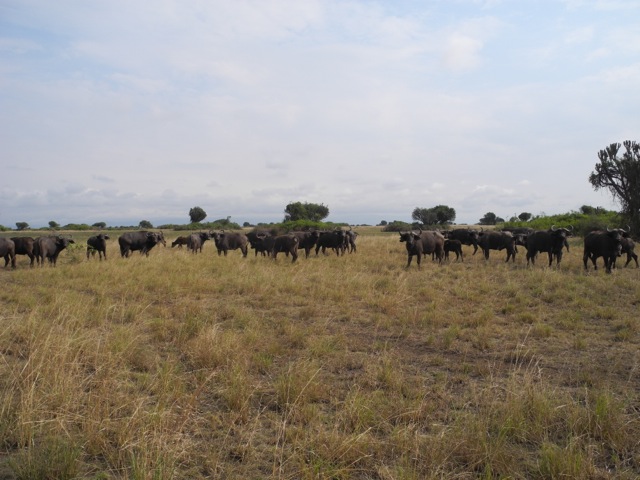
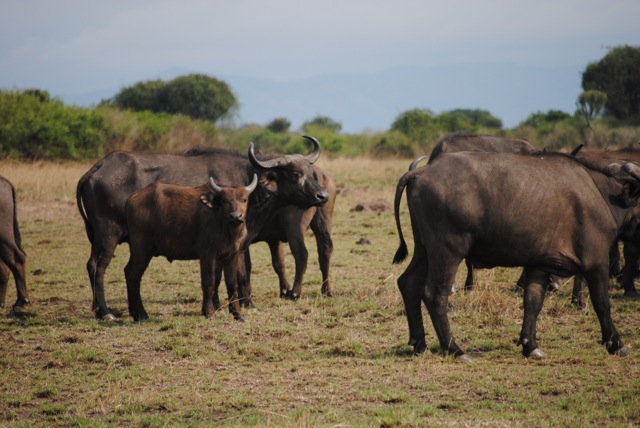
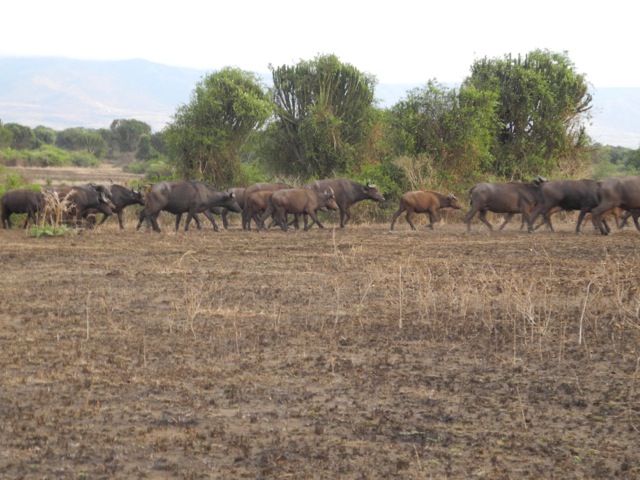
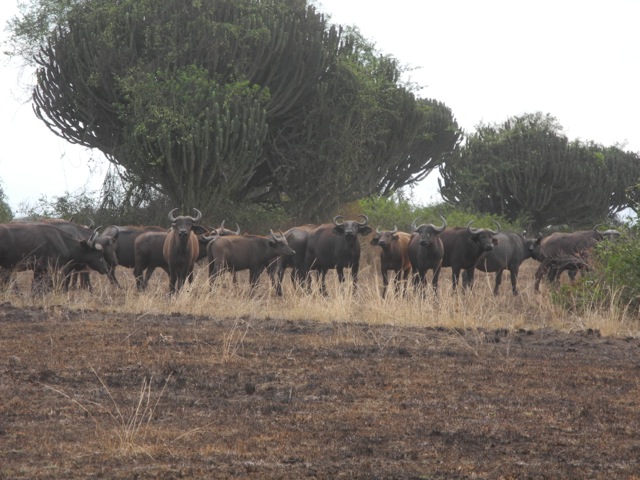
We also stopped to see some of the crater lakes – one of which is used for salt harvesting – and one of the small fishing communities within the park’s boundaries. 5
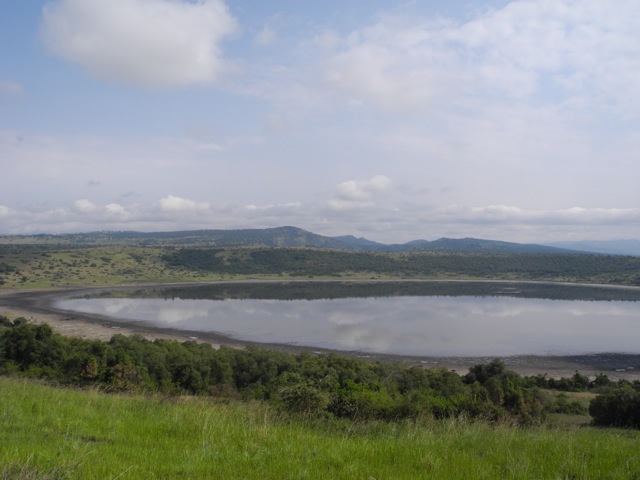
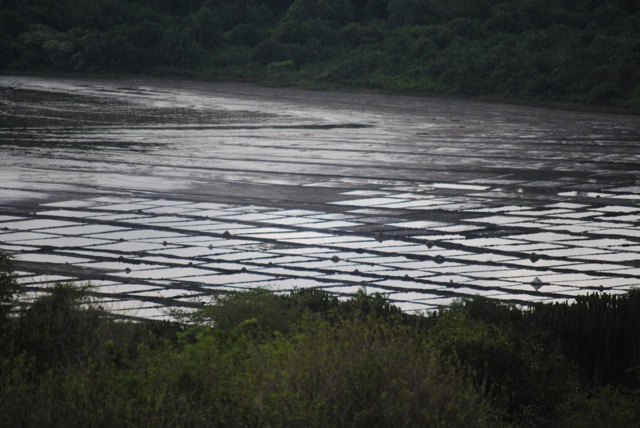

Our companions decided to take the afternoon off, and Marc and I went with Robert to see a nearby gorge. It was incredible the way that the surrounding brown savannah seemed ripped open in a jagged tear filled with vivid, lush rainforest. From where we stood, we could hear chimpanzees in the forest below. We wanted to go hiking, but the guard explained that we could only do so if we went with a chimp trekking group. Since that would be costly (and we had already had one amazing chimp trekking experience), we decided to pass.
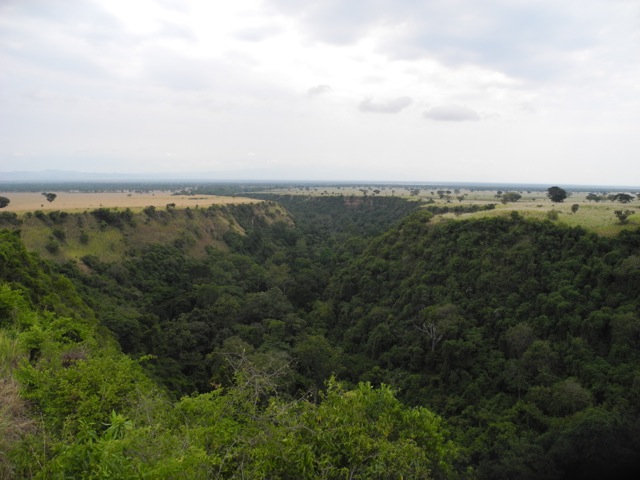
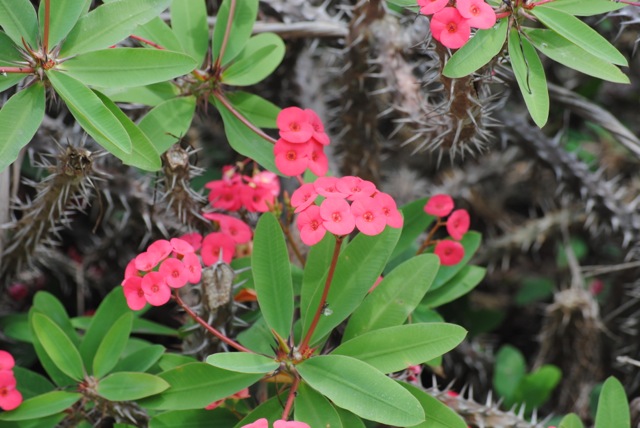
Instead, we went out to lunch with Robert, after which Marc played pool with another restaurant patron, and then hit the pool balls around a bit more with Robert.6

On our way back to the Bush Lodge, we spotted a hippo making his way inland for the evening.
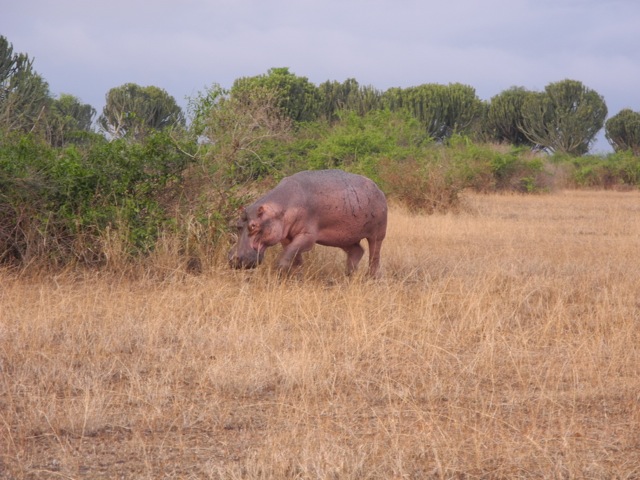
Hippos weren’t the only creatures we saw near the Bush Lodge – we saw plenty of brightly colored lizards (which evaded our attempts to photograph them, so you’ll have to take our word for it) and beautiful birds.
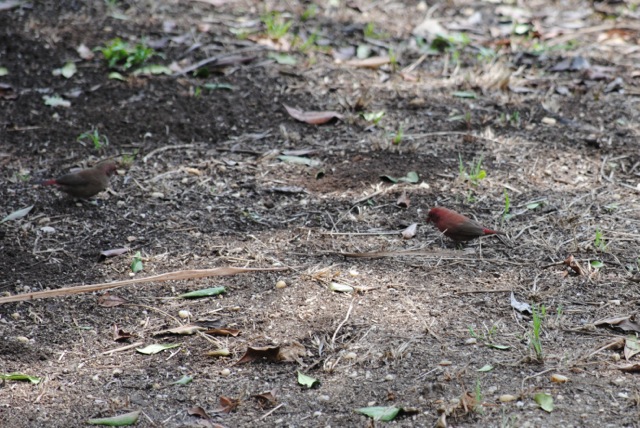
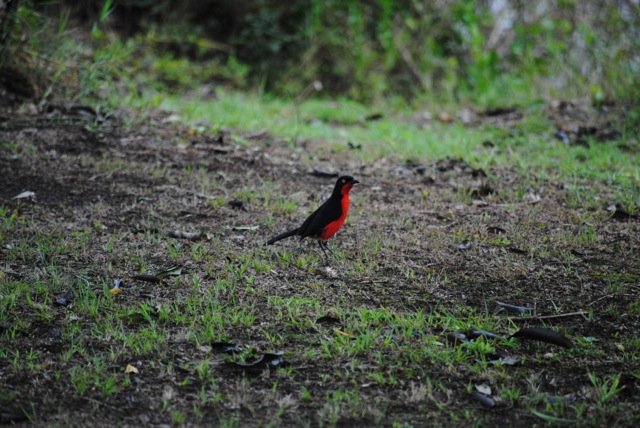
Where We Stayed:
☆ Bush Lodge. Five goats. The Bush Lodge is owned by the same folks that own Fort Murchison at Murchison Falls National Park, and was similarly nice. Our permanent tent had comfortable beds, a small porch with chairs, and a great view of the Kazinga Channel. We looked forward to the delicious three-course dinners each night. Also, there were staff members with flashlights on hand at all hours of the evening to escort you to the bathroom – just in case there happened to be a wandering hippo!
1 This was the third of four times that we crossed the Equator on this trip. Our first crossing was in the air on our flight from London to Johannesburg, the second was on the road when bussing from Kigali to Kampala, and our fourth would occur a week later, on the water, when taking a ferry from the Ssese Islands to Entebbe.
2 Fun fact: If you Google “plural of hippopotamus,” you get this:
 Answer.com then suggests that you just avoid any confusion and use the word “hippos.”
Answer.com then suggests that you just avoid any confusion and use the word “hippos.”
3 Our iPhones take much smaller SIM cards than the one in Robert’s phone, so we couldn’t provide any help in that regard.
4 Props to the Bush Lodge staff, which saved us some breakfast even though it was well after breakfast time, and served us on a nice table set up near the water.
5 Queen Elizabeth National Park is unique among Uganda’s national parks in that it is the only one to be designated as a Biosphere Reserve by UNESCO. Within the confines of the park, an estimated 20,000 people live in ten separate communities, all of which rely primarily on either fishing or salt harvesting for their primary sources of income.
6 Robert told us that he wasn’t any good at pool, which is exactly what everyone who is really good at pool says before they completely cream you, but it turned out he was telling the truth: when he first went to aim, he drew his cue back to hit a numbered ball rather than the cue ball.

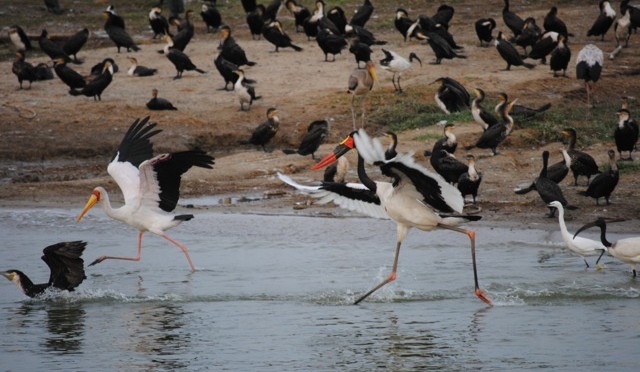

was that hippo in the middle of the road curled up like a little kitten???